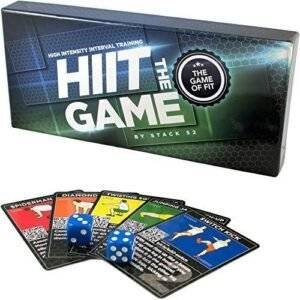In the realm of fitness, stationary bike training has emerged as a powerful and versatile tool for individuals seeking to enhance their cardiovascular endurance, boost overall strength, and achieve specific performance goals. Whether you are a seasoned athlete aiming to refine your endurance and speed, a casual fitness enthusiast looking to incorporate low-impact exercise into your routine, or a rehabilitation patient striving to regain mobility and strength, the stationary bike offers a unique blend of accessibility and effectiveness.
This comprehensive guide delves into the multifaceted aspects of stationary bike training, providing you with expert insights into how to formulate the most effective training regimens tailored to your individual needs and objectives. From understanding the physiological benefits of cycling and the mechanics of different cycling modalities to exploring advanced training techniques, we aim to equip you with the knowledge necessary to maximize your performance. Additionally, we’ll illustrate how to integrate cycling with other forms of exercise, provide practical tips for maintaining motivation and consistency, and highlight common mistakes that can hinder progress.
As we embark on this journey through the intricacies of stationary bike training, expect to find evidence-based strategies, expert recommendations, and actionable advice that will empower you to take your cycling performance to new heights. With the right approach and dedication, the stationary bike can serve as an exceptional ally in your pursuit of health, fitness, and athletic excellence.
Table of Contents
- Understanding the Benefits of Stationary Bike Training for Enhanced Endurance
- Optimizing Your Workout Strategy: Intensity Levels and Duration for Peak Performance
- Incorporating Cross-Training Techniques for Balanced Muscle Development
- Monitoring Progress and Adjusting Your Training Plan for Continuous Improvement
- The Way Forward
Understanding the Benefits of Stationary Bike Training for Enhanced Endurance
Stationary bike training offers a range of benefits that significantly contribute to enhanced endurance, making it an invaluable component of any fitness regimen. One primary advantage is its low-impact nature, which allows individuals to engage in prolonged cardiovascular workouts without putting excessive stress on joints. This is especially beneficial for those recovering from injuries or looking to build up their fitness levels gradually. Additionally, stationary biking helps improve cardiovascular efficiency, enabling the heart to pump blood more effectively, which directly translates to better oxygen delivery to the muscles during more intense physical activities.
Beyond physical advantages, this training method also fosters mental resilience. The steady rhythm of pedaling and the ability to track progress through metrics like heart rate, distance, and resistance levels can enhance motivational drive. Engaging in structured workouts on a stationary bike aids in establishing a focused training plan, allowing individuals to set realistic goals and measure their performance over time. To illustrate the benefits of stationary cycling compared to other forms of cardio, consider the following table:
| Training Method | Impact Level | Cardiovascular Benefits | Accessibility |
|---|---|---|---|
| Stationary Bike | Low | High | High |
| Running | High | Moderate | Medium |
| Swimming | Low | High | Low |
| Rowing | Medium | Moderate | Medium |
Optimizing Your Workout Strategy: Intensity Levels and Duration for Peak Performance
To achieve peak performance on the stationary bike, it’s essential to fine-tune both intensity levels and duration based on your fitness goals. Intensity levels, classified as low, moderate, and high, should be strategically incorporated into your training regimen. Low-intensity workouts (50-65% of your Maximum Heart Rate, or MHR) are ideal for recovery days and building aerobic endurance. Moderate-intensity sessions (65-85% MHR) can enhance cardiovascular fitness and are perfect for steady-state rides. high-intensity intervals (85-95% MHR) promote power and stamina, allowing you to push your limits and achieve optimal results. Engaging in a mix of these intensity levels ensures balanced development and prevents plateauing.
Duration also plays a crucial role in optimizing workout benefits. Typically, session duration can be broken down as follows:
- Short sessions: 20-30 minutes of high-intensity intervals. Effective for time-constrained athletes looking to maximize calorie burn.
- Medium sessions: 30-60 minutes at moderate intensity. Beneficial for improving overall endurance while still maintaining a challenging workout.
- Long sessions: 60+ minutes at low intensity. These rides help build a strong aerobic base, ideal for long-distance training.
As you structure your workouts, consider alternating between these types of sessions each week to keep your training dynamic and effective. Below is a simple reference table showcasing an example weekly workout plan tailored for stationary biking:
| Day | Workout Type | Duration |
|---|---|---|
| Monday | High-Intensity Intervals | 30 minutes |
| Wednesday | Moderate Steady-State | 45 minutes |
| Friday | Low-Intensity Recovery | 60 minutes |
| Saturday | Long Ride | 90 minutes |
Incorporating Cross-Training Techniques for Balanced Muscle Development
To achieve a well-rounded physique and enhance your performance on the stationary bike, integrating cross-training techniques is essential. By diversifying your workout routine, you not only help prevent plateaus but also reduce the risk of injury associated with repetitive movements. Incorporating a variety of modalities can lead to balanced muscle development. Consider including the following activities in your regimen:
- Strength Training: Focus on compound movements like squats and deadlifts, which engage multiple muscle groups.
- Plyometrics: Add explosive exercises such as box jumps to improve power and agility.
- Yoga or Pilates: These practices enhance flexibility and core stability, vital for maintaining form during bike sessions.
- Swimming: A low-impact cardiovascular workout that targets different muscle groups without straining your joints.
To monitor your progress and ensure a balanced approach, use a weekly training table to outline your sessions. This method encourages discipline and makes it easier to track your cross-training activities alongside your cycling routines. Here’s a sample format to help you plan efficiently:
| Day | Training Focus | Duration |
|---|---|---|
| Monday | Strength Training | 60 minutes |
| Tuesday | Stationary Bike | 45 minutes |
| Wednesday | Plyometrics | 30 minutes |
| Thursday | Yoga | 60 minutes |
| Friday | Swimming | 45 minutes |
| Saturday | Stationary Bike | 60 minutes |
| Sunday | Rest/Recovery | – |
Monitoring Progress and Adjusting Your Training Plan for Continuous Improvement
To optimize your progress on the stationary bike, it’s crucial to implement a systematic approach to monitor your performance. Tracking metrics such as distance, duration, resistance level, and heart rate will give you a comprehensive view of your workouts. Utilize a training log or fitness app to keep records of each session. Consider the following strategies:
- Set specific, measurable goals to create a baseline for comparison.
- Conduct regular fitness assessments, such as time trials or interval training tests.
- Monitor recovery times and how your body feels post-workout.
Adjustments to your training plan should be based on the insights gleaned from your progress tracking. If you notice a plateau in performance, it might be time to increase the intensity or modify workout types. You can use a simple feedback loop to evaluate and adapt your strategy:
| Performance Indicator | Action Plan |
|---|---|
| Stagnant Distance | Incorporate interval sprints or longer endurance sessions. |
| Increased Fatigue | Evaluate recovery protocols; include more rest days. |
| Inconsistent Heart Rate | Adjust resistance and incorporate steady-state rides. |
The Way Forward
embracing the multifaceted approach to stationary bike training outlined in this guide can significantly enhance your performance and overall well-being. By meticulously setting your goals, optimizing your cycling techniques, and integrating diverse training modalities, you can unlock the full potential of your workouts. Remember, consistency is key; regular assessment of your progress will not only keep you motivated but also enable you to make informed adjustments to your training regimen.
As you embark on or continue your stationary bike journey, prioritize safety by ensuring proper bike setup and maintaining suitable resistance levels to prevent injuries. Additionally, complementing your cycling routine with strength training, flexibility exercises, and adequate nutrition will create a comprehensive fitness strategy that bolsters endurance and stamina.
Ultimately, the principles of stationary bike training extend beyond mere cardiovascular fitness. They encompass resilience, discipline, and a commitment to personal growth. Whether you’re a competitive athlete seeking to refine your performance or a fitness enthusiast aiming for healthier living, the insights provided in this guide will equip you with the tools necessary for success. Remember, your journey on the stationary bike is not just about the miles you accumulate but the strides you take toward achieving your fitness aspirations. Embrace the ride!





